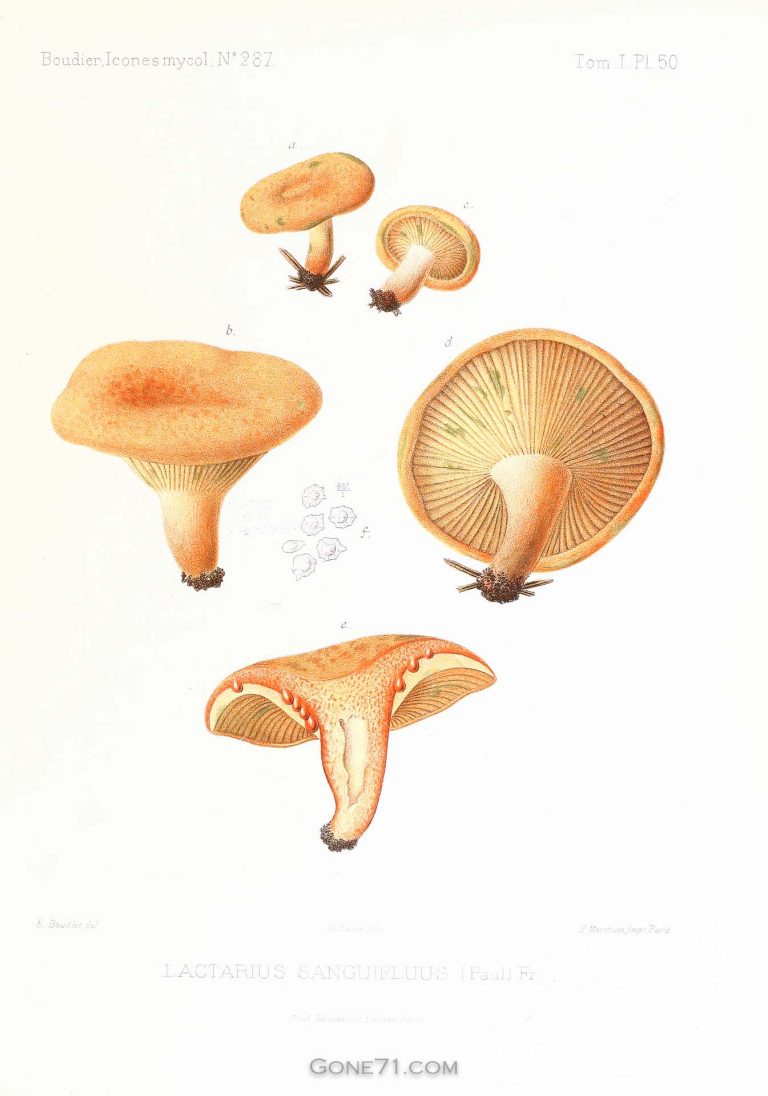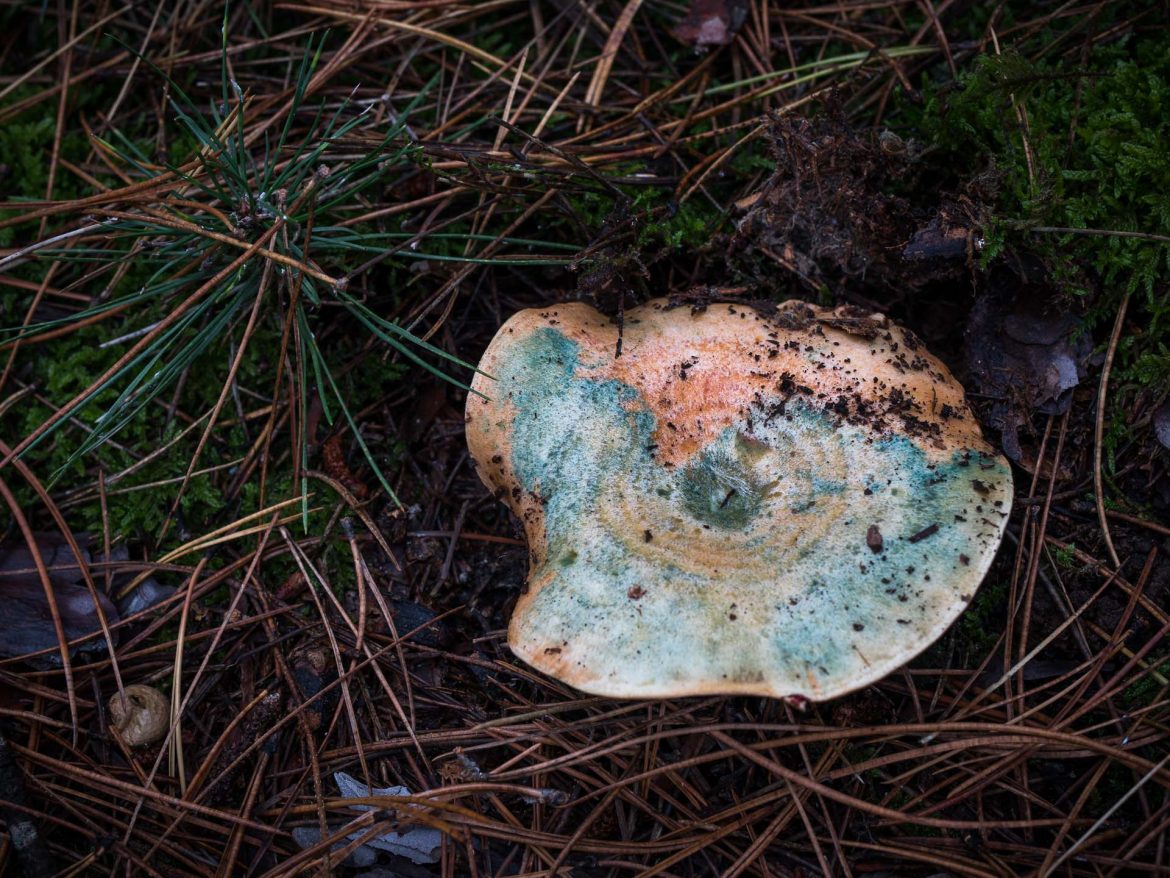Finnish: Patinaleppärousku
Swedish: Grönfläckig vinriska
Norwegian: –
German: Spangrüner Kiefernreizker
Sci. Syn.: HYPOPHYLLUM SANGUIFLUUM, LACTIFLUUS SANGUIFLUUS, LACTARIUS VINOSUS, LACTARIUS VIOLACEUS
height: 5 – 12 cm cm
hat: 5 – 14 cm
trunk diameter: 1 – 4 cm
months: July – November
colours: red-orange with greenish parts
characteristic: red milk, brittle, turns red when cut or broken
habitat: pine forests, more common in SOuthern regions
taste: slightly spicy when consumed raw
smell: sweet, fruity

Description
The bloody milk cap is a very intense mushroom with a very strong red milk and a strong green color in the fruiting body. It has the same properties as the famous saffron milk cap (Lactarius deliciosus) but is very rare and hard to find.
Lookalikes
Different milk caps are often difficult to distinguish from one another. But if you can at least determine the genus Lactarius properly, the milk-color can give you clues about its edibility. False saffron milk caps can be confused with the poisonous birch milk cap (Lactarius torminosus). But this one has a very shaggy hat and its milk is white. This doppelganger is very hot in taste.
Much more likely is to confuse it with some other close relatives as the real saffron milk cap (Lactarius deliciosus) the Milky agaric (Lactarius salmonicolor) or the false saffron milk cap (Lactarius deterrimus). They are all edible in case of doubt.
Notes
Notes for cooking: Young mushrooms where the cap is still tightly rolled up are particularly suitable for preparation. They have a very firm meat that retains its crunchy consistency even under various preparation methods. Older specimens are often brittle and can be a little crumbly. In terms of taste, these specimens are still very good, but should the choice arise, we recommend that young people take precedence in this case.
Notes on medicinal use: In folk medicine as well as TCM, saffron milk caps are considered medicinal mushrooms due to their ingredients and their high vitamin and mineral content. They should not be cut when collected so that they do not lose their milk and dry out until preparation.
Recipes
For recipes on milk caps see Safron Milk Cap (Lactarius deliciosus).
We have compiled this overview with the best of knowledge and belief, but do not claim to be complete and reserve the right to make errors.
Learn more about poisonous mushrooms and mushroom poisons here
↓↓↓

